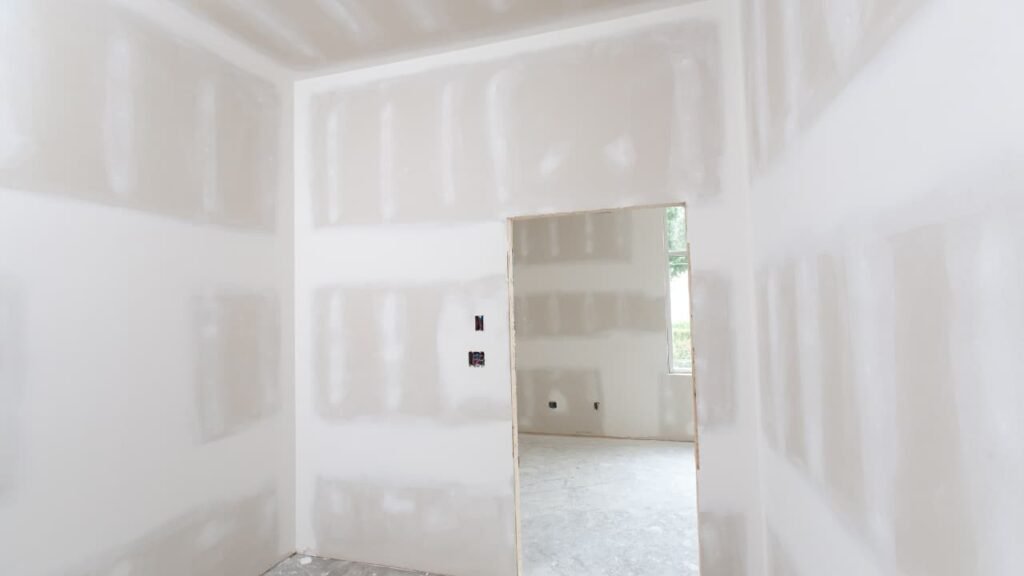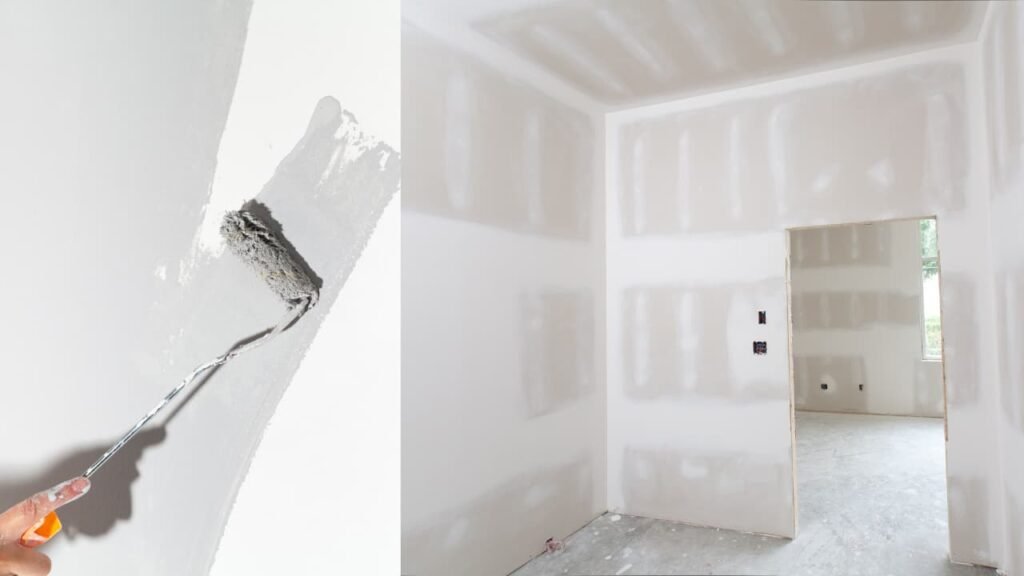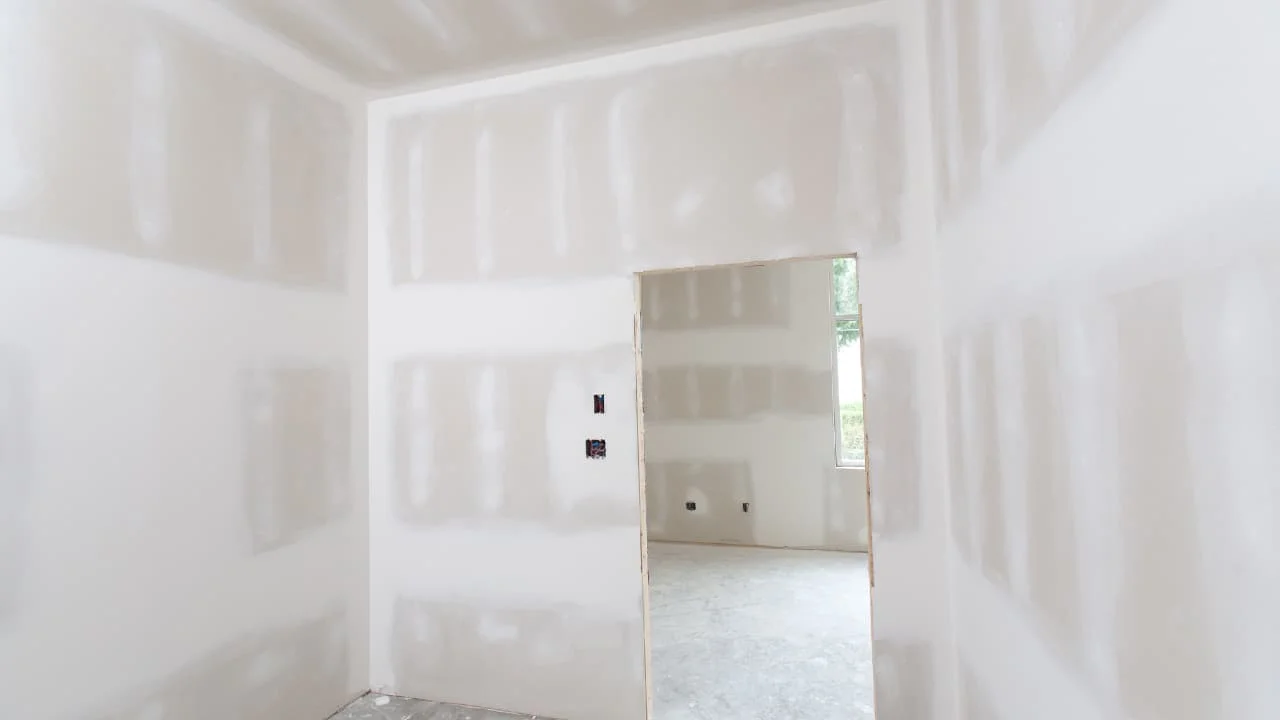So, you’ve got brand-new drywall installed and can’t wait to splash some color on it. Before picking up that paintbrush, though, there’s one crucial question: Can you paint drywall without primer? In this blog post, we’ll explore the importance of using primer when painting fresh drywall, and discuss what could happen if you decide to skip this vital step.
We’ll also provide tips for proper surface preparation and help you determine when it might be appropriate to bypass the priming process altogether.
Key Takeaways – Can You Paint Drywall Without Primer?
- Using primer when painting drywall is crucial for achieving an even finish and preventing peeling or flaking paint over time.
- Skipping primer can lead to uneven coverage, difficulty achieving desired colors, and may require more coats of paint for full coverage.
- Properly preparing the surface by sanding rough spots and filling any cracks with joint compound before applying primer will ensure maximum adhesion and create a smooth base for your topcoat.
- While it’s possible to skip primer on previously painted drywall or if using a high-quality paint-and-primer-in-one product, it’s still important to properly prepare the surface for the best results.

Table of Contents
Understanding Drywall And The Importance Of Primer
Drywall is a gypsum-based material that is commonly used to create interior walls and ceilings, and when it comes to painting drywall, using primer plays a crucial role in achieving the best results.
What Is Drywall?
As a seasoned DIY enthusiast, I’ve come across drywall many times throughout various home improvement projects. Drywall, also known as sheetrock or gypsum board, is a widely used construction material that forms the walls and ceilings of most residential and commercial buildings.
Introduced as an alternative to traditional lath-and-plaster walls, drywall has become a popular choice due to its ease of installation and cost-effectiveness. Additionally, it provides fire resistance and soundproofing properties that make it desirable for both homeowners and builders alike.
The Purpose Of Primer
Primer may seem like an extra step in painting drywall, but it serves a vital purpose by creating a smooth base for paint adhesion and ensuring even coverage. Without good primer throughout, porous surfaces like drywall can absorb moisture from paint and cause peeling or flaking over time- especially in humid climates.
Additionally, primer provides better color depth and durability than simply applying more layers of paint would achieve.
Benefits Of Properly Priming Drywall
Priming is a crucial step when painting drywall, as it provides several benefits for the final result. One of the main advantages of properly priming drywall is achieving an even paint finish.
Without primer, some areas may soak up more paint than others, resulting in a patchy or uneven look. Additionally, primer helps to improve paint adhesion and durability, making it less likely that the new coat will peel or flake off over time.
Another benefit is that using tinted primer paints can help save time and money by reducing the number of coats required for coverage.
Risks Of Skipping Primer When Painting Drywall
Skipping one coat or fewer coats of primer when painting drywall can lead to an uneven finish, peeling or flaking paint, and may require more coats for full coverage.
Uneven Finish
Skipping the first coat of primer when painting drywall can lead to an uneven finish. Without a full primer coat and proper basecoat, the paint may not adhere evenly to the surface of the drywall, resulting in splotchy and inconsistent color distribution.
This problem is particularly noticeable if you’re using a darker paint color.
I once made the mistake of skipping primer when painting my living room wall. The result was disastrous – I ended up with a lumpy surface that looked more like it had been painted by a toddler than by a professional painter! If you want your walls to look smooth and consistent, it’s worth taking the time to prime them properly before applying any topcoat.
Peeling Or Flaking Paint
One of the biggest risks of skipping primer when painting drywall is peeling or flaking paint. This can occur due to several factors, such as humidity or a porous surface.
When the paint is applied directly onto drywall without primer, it may not adhere as well and can easily peel away from the wall over time.
I once had a client who skipped priming the newly installed drywall in their bathroom before painting it. Within just a few months, they noticed that the paint started to peel away due to constant exposure to moisture in the room.
They had to redo the entire project from scratch – this time properly priming before painting – which ended up costing them more money and wasting time in the long run.
Increased Number Of Coats Required For Coverage
I’ve learned from firsthand experience that skipping primer when painting drywall can lead to an uneven finish and peeling or flaking paint.
To avoid this headache-inducing issue, be sure to properly prepare the surface before applying a skim coat of high-quality primer. This will ensure maximum adhesion and create a smooth base for your topcoat.
Choosing a tinted primer that closely matches your desired paint color can also save you time and can save money in the long run by reducing the number of necessary topcoats.
Best Practices For Painting Drywall With Primer

Prepare the surface before painting by sanding rough spots, wiping it clean with a damp cloth, and filling any cracks with the joint compound – this ensures that the primer adheres properly to the drywall.
Properly Preparing The Surface
Before you start painting your drywall, it is essential to prepare the surface properly for the best results. This entails sanding down any rough areas or imperfections on the wall to make sure that the paint adheres correctly.
If there are any holes or cracks in the drywall, be sure to fill them with joint compound and let it dry before smoothing out the surface with sandpaper. A smooth, even surface allows for better paint coverage and helps prevent an uneven finish.
Choosing The Right Primer
When it comes to painting drywall, choosing the right primer is crucial for achieving a smooth and even finish. There are several types of primers available, including latex, oil-based, tinted, and specialty primers designed for specific surfaces or conditions like high humidity.
For example, if you’re painting over a porous surface such as new drywall or joint compound, it’s best to use a PVA (polyvinyl acetate) primer as it seals the surface and enhances paint adhesion.
On the other hand, if you’re painting directly over an existing painted surface with no issues like peeling or flaking paint, then a basic latex paint or primer should suffice.
Applying The Primer Correctly
When applying primer to drywall, it’s essential to start with clean, dry surfaces. Use a high-quality brush or roller and apply two coats of the primer evenly in long strokes.
If you’re working on a large area, consider breaking it up into smaller sections to ensure that you don’t miss any spots. It’s also important not to rush the process – allow ample time for the primer to dry completely before painting over it.
Choosing the right type of primer is just as crucial to good paint, as the proper application technique. Tinted primers are ideal for covering darker colors, while oil-based primers work well on metal surfaces.
Consider your specific needs and consult with an expert if necessary to find the best product for your project.
Letting The Primer Dry Completely
One of the most important steps in painting drywall is letting the primer dry completely. This step cannot be rushed, and it’s essential to ensure that the surface is ready for painting.
Rushing this step can lead to a bumpy or uneven finish, which can ruin your entire paint job.
In my experience, I have found that it’s best to let the primer dry overnight before applying any extra coat of paint on top of it. This way, you give ample time for the primer to settle and adhere properly to cover the wall, creating a smooth surface for your final coat of paint.
Patience is key when it comes to drying; even if the primer appears dry after a few hours, resist the urge to begin painting until you’re sure it’s fully set.
Painting With Quality Paint And The Right Tools
When it comes to painting drywall, using quality paint and the right tools to finish paint it is just as important as properly priming the drywall surface. It’s crucial to choose high-quality paint that will provide good coverage, durability, and color consistency.
For best results, use a high-quality synthetic bristle brush or foam roller. For larger surfaces like ceilings or walls, an airless sprayer may be more efficient. Taking the time to invest in these tools will save you headaches down the road and make your painting project go much smoother.
When Can You Skip Primer?
There are a few situations when it’s possible to skip primer when painting drywall, such as if the drywall has already been painted if the surface has been prepped with joint compound, or if you’re using a high-quality paint-and-primer-in-one product.
If The Drywall Has Already Been Painted
If the drywall you plan to paint has already been painted before, it may be possible to skip using primer. However, some drywall installation experts recommend lightly sanding the drywall mud or surface and wiping it down with a damp cloth before painting to ensure proper adhesion.
It’s important to note that skipping primer on previously painted drywall may result in uneven coverage or difficulty achieving the desired color. Additionally, if your chosen paint has different properties than the existing coat of paint (e.g., gloss versus flat), then priming may still be necessary for adequate adhesion.
If The Drywall Has Been Prepped With Joint Compound
When prepping drywall before painting, joint compound is often used to smooth out any imperfections or seams. Once the joint compound has been applied and sanded down, it’s important to apply a coat of primer before painting.
The joint or drywall compound can create a porous surface that can absorb paint unevenly leading to blotchy and uneven coverage, even with multiple coats of different shades of paint. Using a tinted primer specifically designed for new drywall or joint compounds will help provide an even base for the final coat of paint.
Skipping this step can result in peeling or flaking paint as well as decreased overall durability of the finish.
If You’re Using A High-Quality Paint-and-Primer-in-One Product
I’ve found that using a high-quality paint-and-primer-in-one product can be a great option if you’re looking to skip the primer step when painting drywall. These products are specially designed to provide excellent adhesion and coverage without the need for separate priming.
When using these types of products, it’s still crucial to properly prepare your surface by cleaning it thoroughly and ensuring any holes or imperfections are filled and sanded smooth.
Conclusion
In conclusion, while it may seem tempting to skip the primer when painting drywall, there are many risks involved. Skipping primer can lead to an uneven finish and peeling or flaking paint over time.
To avoid these issues, it is important to properly prepare the surface, prepare drywall, and choose the right drywall primer for your project. However, if your drywall has already been painted or prepped with joint compound, you may be able to skip primer altogether.
FAQs:
What are some benefits of using a primer before painting drywall?
Using a primer before painting drywall can help with better adhesion of the paint to the surface, ensuring that it doesn’t peel or flake off easily. It can also help in creating an even-toned base that will allow your final coat to look consistent and uniform.
How do I choose the right type of primer for my project?
The type of primer you should use depends on various factors like your chosen paint color, texture desired, the moisture level in your space, etc.. A professional painter can guide you regarding which kind would suit you best.
Can I mix primer with paint instead of applying them separately onto my unfinished drywall??
While adding a small amount (less than 10%)of Paint into Primer is generally acceptable – mixing & diluting too much could compromise its effectiveness and lead to unpredictable results – leading ultimately to more time spent correcting mistakes if things go wrong down the line so stick with separate applications where possible!

